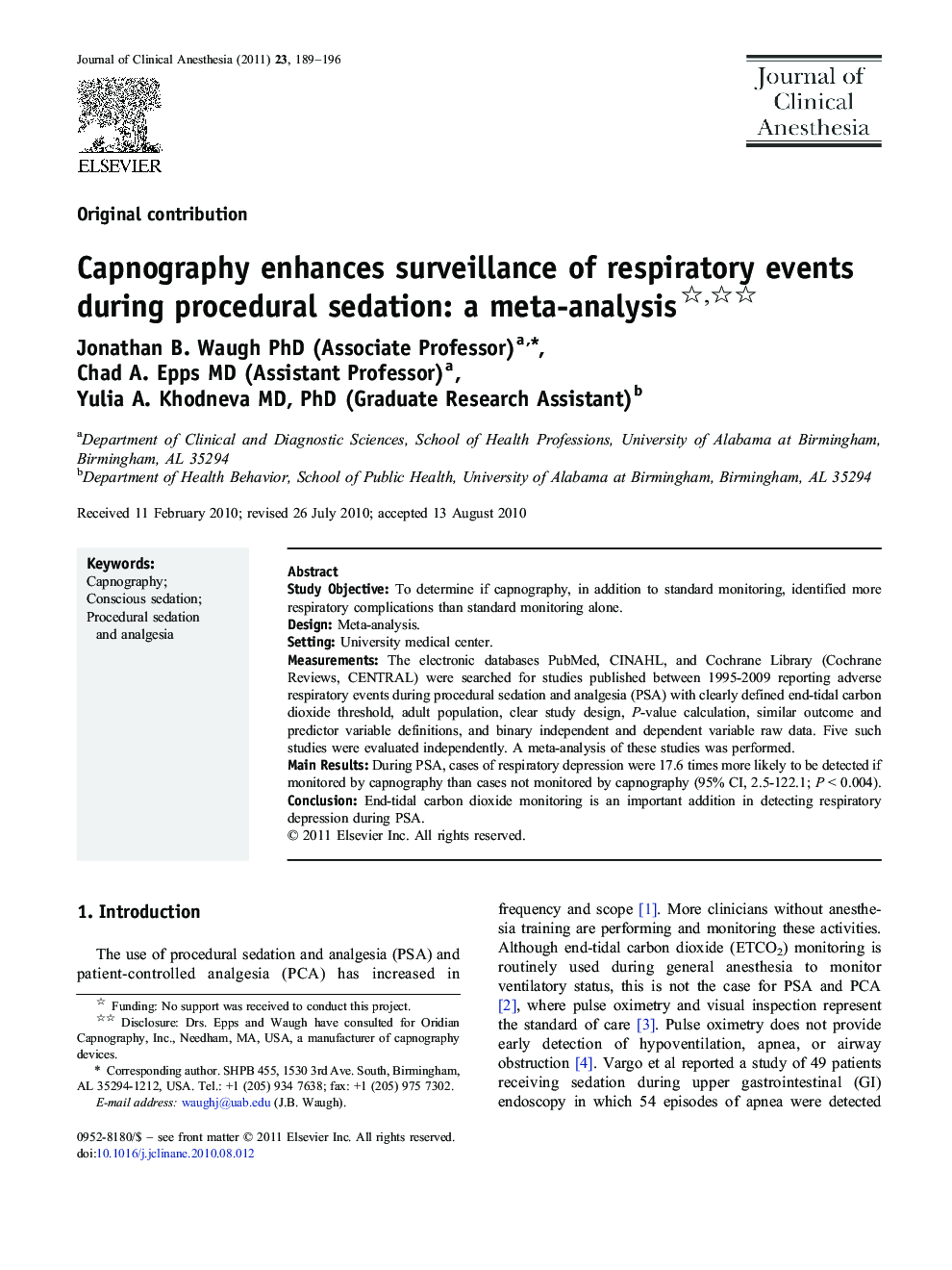| Article ID | Journal | Published Year | Pages | File Type |
|---|---|---|---|---|
| 2762799 | Journal of Clinical Anesthesia | 2011 | 8 Pages |
Study ObjectiveTo determine if capnography, in addition to standard monitoring, identified more respiratory complications than standard monitoring alone.DesignMeta-analysis.SettingUniversity medical center.MeasurementsThe electronic databases PubMed, CINAHL, and Cochrane Library (Cochrane Reviews, CENTRAL) were searched for studies published between 1995-2009 reporting adverse respiratory events during procedural sedation and analgesia (PSA) with clearly defined end-tidal carbon dioxide threshold, adult population, clear study design, P-value calculation, similar outcome and predictor variable definitions, and binary independent and dependent variable raw data. Five such studies were evaluated independently. A meta-analysis of these studies was performed.Main ResultsDuring PSA, cases of respiratory depression were 17.6 times more likely to be detected if monitored by capnography than cases not monitored by capnography (95% CI, 2.5-122.1; P < 0.004).ConclusionEnd-tidal carbon dioxide monitoring is an important addition in detecting respiratory depression during PSA.
